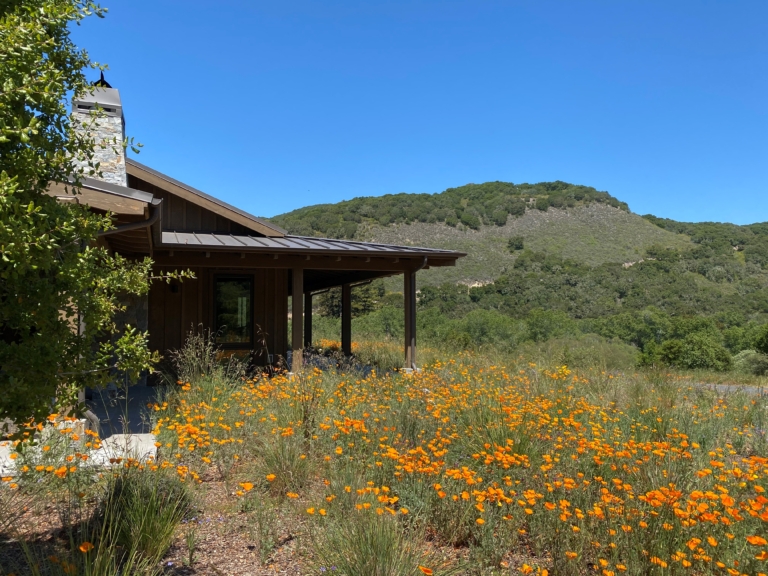Design for rural resilience is not only possible but offers a unique opportunity for a family to thrive on a thoughtfully designed homestead in the face of rural California’s challenging realities. Creating a safe retreat within this environment involves a deep understanding of the landscape and the forces that act upon it. Water remains the key that unlocks the potential for establishing a home within a remote western setting and is essential for making the property resilient to these challenges. Persistent drought and the seasonal fire threat have become the norm for Californians in recent years, but despite these factors, rural escapes still present an attractive lifestyle, offering a safe and sustainable home for those drawn to the land.
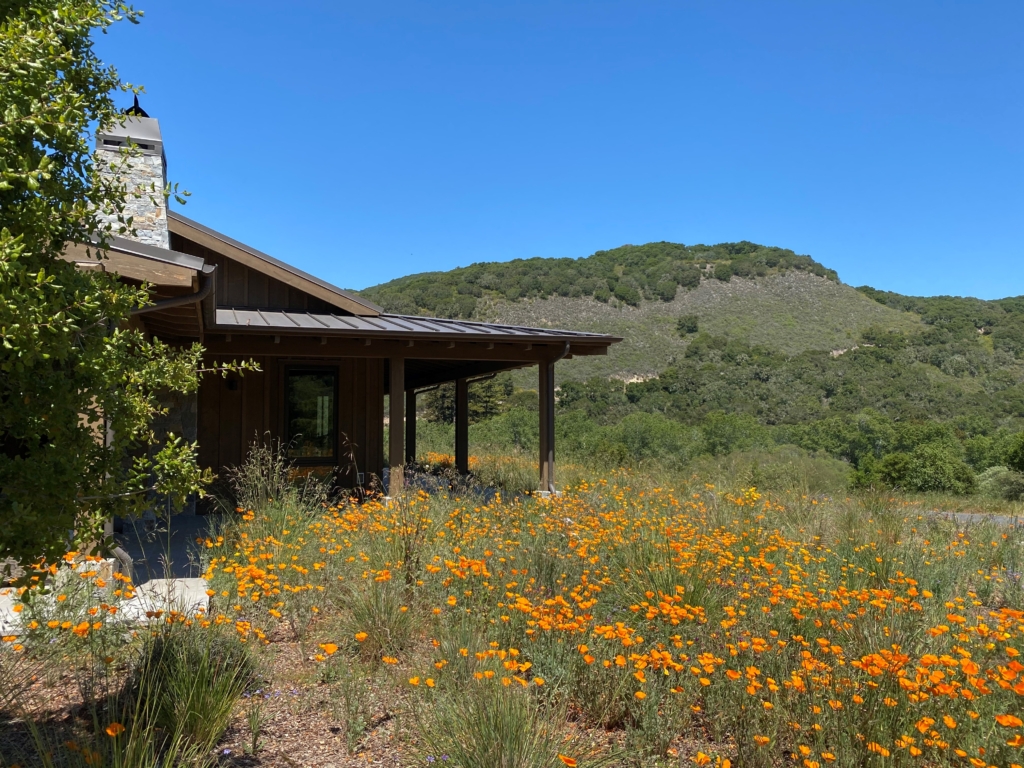
Availability of Water
Finding ways to recycle water in an environment that does not naturally produce much of it is essential for design for rural resilience. Rainwater harvesting does require large tanks to be effective and can be especially beneficial if wildfires threaten your homestead.
We spoke with Kate Stickley of Arterra Landscape Architects who explained how a hybrid system of municipal water supplies along with some recycling systems is currently an attractive option as they are often more economically viable than rain harvesting.
“If it is a primary home, there will be a ton of grey water that can be reused,” she said. “The rate of return for grey water is good. The cost of the system is far less, and you don’t have to create large capacity, you just need to constantly create water and use it for irrigation.”
Natural bodies of water may well be useful too, but biological assessments will likely be required to identify the flora or fauna which will indicate how much you can use from that source. For rural properties with grazing ponds, renovation of the ponds to remove organic matter may be necessary. This water won’t be potable but will still be excellent for irrigation and, of course, firefighting.
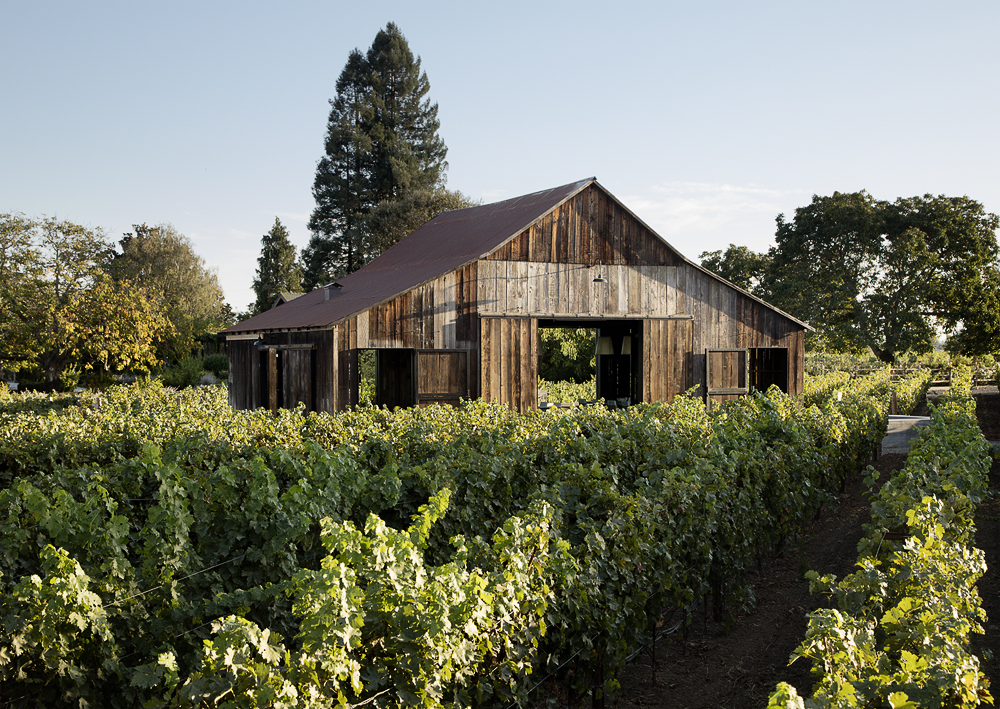
Fire Preparedness
Agriculture, whether that’s vineyards or traditional farmlands, is an excellent means to modulate fire behavior. Irrigated crops or grazed fields are natural fire breaks, while open pastures provide the opportunity for helicopters to land should the need ever arise.
There are more active responses that can be deployed too. Randy Lang, the president, and founder of waveGUARD, a patented Exterior Wildfire Defense System, explained how many homeowners are now retroactively installing exterior fire sprinklers to protect their property. Many private developers are doing likewise and mandating the waveGUARD system to protect their investments in rural California.
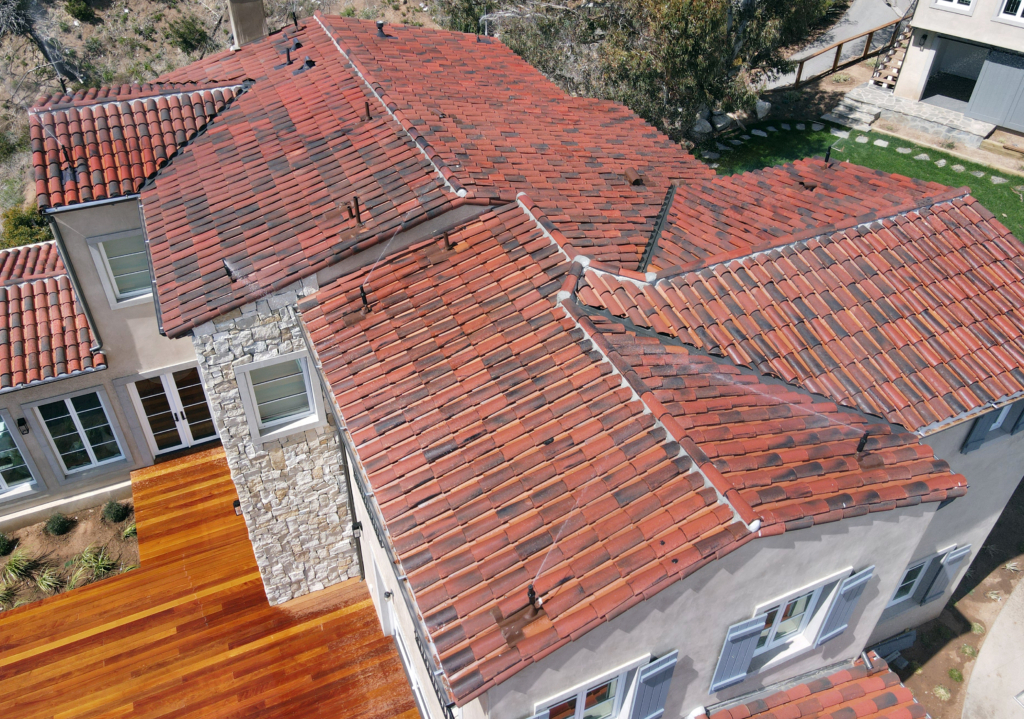
“We use a direct current pumping system powered by a battery backup that is independent of the utility power of a primary house,” Randy said. “The pumps run for two hours nonstop. A fire typically is there and gone in 15-20mins. The system detects the flames from 450’ away, sends a signal to our controller that opens the valve.”
“All the zones are activated at once. An environmentally friendly fire retardant is injected automatically into the water,” he explained. The system is gravity-fed and relies on large water tanks so that the domestic supply is not interrupted, which is particularly important for fire departments during the firefighting effort.
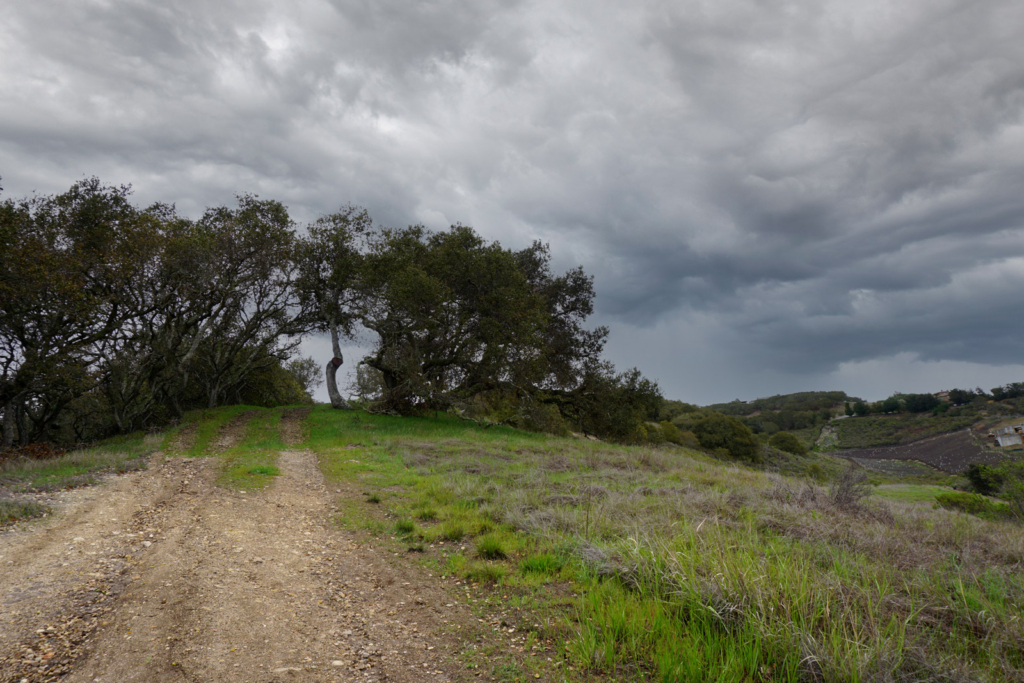
Resilient Aesthetic
One of the benefits of design for rural resilience is its potential to blend the necessary infrastructure with an aesthetically pleasing rural lifestyle. Even retrofitted systems like waveGUARD can be seamlessly incorporated into a property’s design.
“Tanks could be clad with a local vernacular material, for above ground storage,” suggested Kate Stickley. “We look for ways we could utilize a water tower as part of an entry sequence and really express them in a way that is cool so that it looks like an old California ranch in a contemporary style.”
“Roads can create experiential moments in a landscape but also act as fire breaks to protect the property. We try to determine if entrance roads, and farm or pedestrian trails on the land can be incorporated in an aesthetically pleasing way, while simultaneously serving their fire break function.”
Plan to Thrive
The challenges of living in rural California and similar remote areas are not insurmountable. With the right design for rural resilience, these challenges can be met with creativity and innovation, balancing the industrial aspects of infrastructure with the charm of a traditional ranch aesthetic. By employing these resilient strategies, homeowners can create sustainable homesteads that offer both protection and beauty. Many of these strategies are not only suitable for rural areas but can be adapted to suburban settings prone to similar hazards.
Knitting those pieces together is something to be embraced and enjoyed as you establish your own resilient patch of acreage.
This is the second part of a four-part series. Part 1. Part 3. Part 4.
By Neil Ginty
Contributors: Jim Westover, Brenna Daugherty, Sarah Mergy, Wendy Osaki
